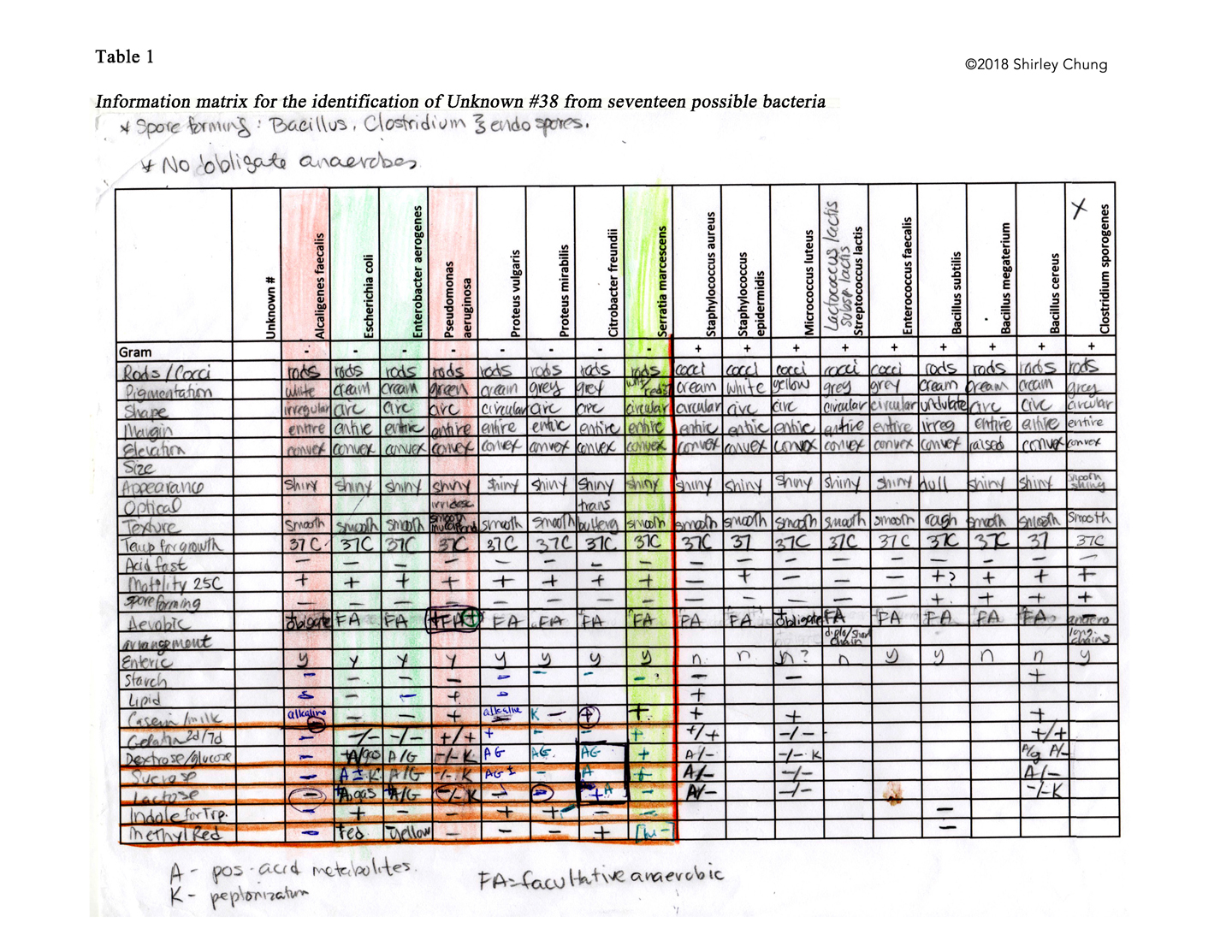How to succeed in your microbiology unknown project.
The most common microbiology project is the correct identification of a bacterium using as few tests/diagnostics as possible. This is usually an “end of quarter” project. Here are some tips (in no particular order):
- The most important tip is to keep your mind open. Let the science speak for itself. Don’t make any assumptions. If you make assumptions from the get-go (e.g. it’s E. coli), then you’ve skewed your perspective and your logic. If you start off looking for something to confirm your assumptions, then you’re going to misinterpret your results.
- Pay attention to your class lab results during the rest of the quarter. Pool data and results from classmates. Learn about the different strains of bacteria you’ve handled. There’s a really good chance that your “unknown” will come from one of the bacterium you’ve previously handled/examined earlier in the quarter.
- If the teacher gave you a list of possible bacteria, then try to eliminate half of the pool (via test results) at every step in your dichotomous key. Create a dichotomous key! For example, the teacher gives you a list of 10 possible bacteria. Separate Gram-positive from Gram-negative. Research all the other qualities of the bacteria and put your research in a matrix chart (examples in pictures below). This matrix will help you create your dichotomous key and help you decide the tests and media you will use.
- During the quarter leading up to the unknown project, take lots of pictures of your results and your classmates’. This will provide a great visual key/reference.
- Develop excellent aseptic techniques as soon as possible.
- Maintain a stock of pure cultures and a working cultures. Label, label, label. I cannot emphasize that enough.
- Create a naming schematic and spreadsheet for your pure/working cultures. The name should tell you which generation of specimen it is. This is an example: 08012018plate. Followed by 08012018plate08072018 (which tells me that I created another plate, 08072018, from the 08012018 plate). Or 08012018plate08072018slant. That tells me that I created a slant, 08072018, from my 08012018 plate. Get the idea? You want to keep track of your generations. And YES…keep the cultures (as many as reasonable), and make sure you have relatively “fresh” batches to do your testing. If you’re 16 days into your unknown project, you’re NOT going to want to use the original plate.



